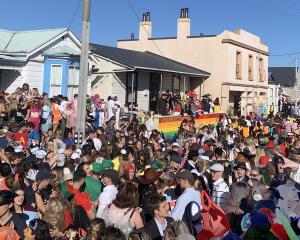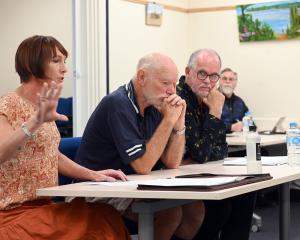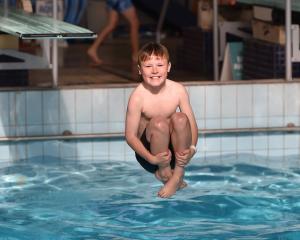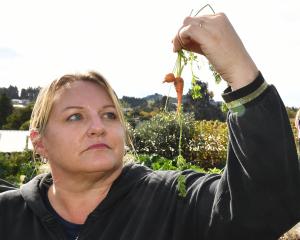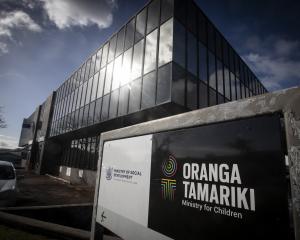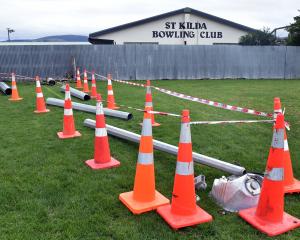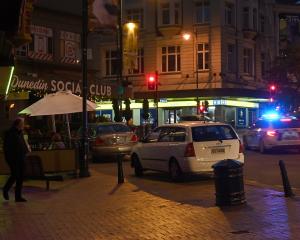
Preliminary results from GNS Science and the University of Otago's School of Surveying pointed to potential subsidence in South Dunedin and other parts of the city.
The problem was worst in reclaimed, low-lying areas of South Dunedin, near the margin of Otago Harbour, satellite data suggesting subsidence of between 2mm and 5mm a year.
Other parts of the city appeared to be subsiding at slower rates, of about 1mm a year, the data showed.
The findings came on top of mounting concern about sea-level rise and rising groundwater in South Dunedin, and prompted a warning from GNS to the Dunedin City Council.
GNS regional geology head of department Robert Smillie wrote to Dunedin Mayor Dave Cull on December 18 warning "a second potential problem exists for South Dunedin''.
"If subsidence is occurring, it has the potential to significantly exacerbate the impact of sea-level rise, both in terms of earlier onset and the size of the area flooded,'' he wrote.
The letter and supporting material was obtained by ODT Insight following an official information request.
Mr Cull, contacted this week, said the warning was being taken seriously.
"It's still tentative, but it seriously does look, from what they're saying, that there's a likelihood that South Dunedin is sinking.''
If confirmed, that would "exacerbate'' the threats of sea-level rise and groundwater in South Dunedin, he said.
Both had been blamed for contributing to last year's South Dunedin's flood, which cost $138 million, and climate-change predictions pointed to similar events becoming more common.
The latest discovery also came after the Parliamentary Commissioner for the Environment, Jan Wright, warned earlier this year South Dunedin presented the "most troubling example'' of high groundwater in the country.
GNS geologist David Barrell, of Dunedin, cautioned against reading too much into the subsidence data, at least for now, as more work was required.
However, any confirmed subsidence would have to be added to predicted sea-level rise scenarios to understand the extent of the problem facing South Dunedin, he confirmed.
"If the land is going down in real terms, any impact of sea-level rise will occur more quickly than expected.''
The subsidence data came from GPS survey sites monitoring land movement in Dunedin over the past 20 years, as well as more recent satellite programmes providing more detailed data.
The city's survey sites suggested subsidence of about 1mm a year, but none of the three sites were in South Dunedin.
Satellite survey and radar data, covering 2003 to 2010, pointed to subsidence of between 2mm and 5mm a year in reclaimed parts of Otago Harbour and South Dunedin.
Paul Denys, from the University of Otago's School of Surveying, said he was "fairly confident'' subsidence was happening, but why, and to what extent, could not yet be stated with confidence.
The data could point to compaction of the fill used to reclaim marshland in South Dunedin, or to larger tectonic forces at play deep beneath the surface, and it was possible both were happening, he said.
Additional research was needed to understand the extent of the problem, and whether changes recorded over 20 years were representative of a longer timescale.
His "best guess ... is that it is'', but "the biggest problem is we don't have a good enough picture of what is happening'', Dr Denys said.
To address that uncertainty, GNS had proposed a co-funded drilling programme to better understand historic subsidence in South Dunedin.
The idea, raised in letters to the DCC and Otago Regional Council, would involve drilling up to 65m down to bedrock to collect core samples, Mr Smillie said.
"We feel, from a technical point of view, that we're a little bit under-done in terms of detailed information about South Dunedin.
"There's been no high-quality scientific drilling done in South Dunedin, and so we're really feeling that we've been in a position where we can't say much, either way, from current knowledge.''
The proposal was likely to cost "tens of thousands'' of dollars, and possibly about $100,000, depending on what was involved.
However, any drilling was on hold while ORC staff focused on the release of a detailed report on South Dunedin's natural hazards next week.
ORC engineering, hazards and science director Gavin Palmer said the report would collate all existing information about South Dunedin's "hazardscape'', including the latest data on subsidence from GNS.
Attention would then turn to what further studies or actions might be needed, he said.
The warning from GNS "doesn't make us any more concerned - we have been concerned about the issue for some time'', he said.
Dunedin City Council staff were reluctant to discuss their response to the GNS preliminary data this week, leaving it to spokesman Graham McKerracher to say the council was "not actually doing anything yet''.
Despite the uncertainty, Dr Denys said subsidence was "the elephant in the room'' when considering the future impact of sea-level rise on coastal communities like South Dunedin.
"It's not just a Dunedin problem. It's just South Dunedin's particularly vulnerable.''
More planning would be "absolutely crucial'', and although there was no need to rush, "I would very much like to see the drilling done,'' he said.





